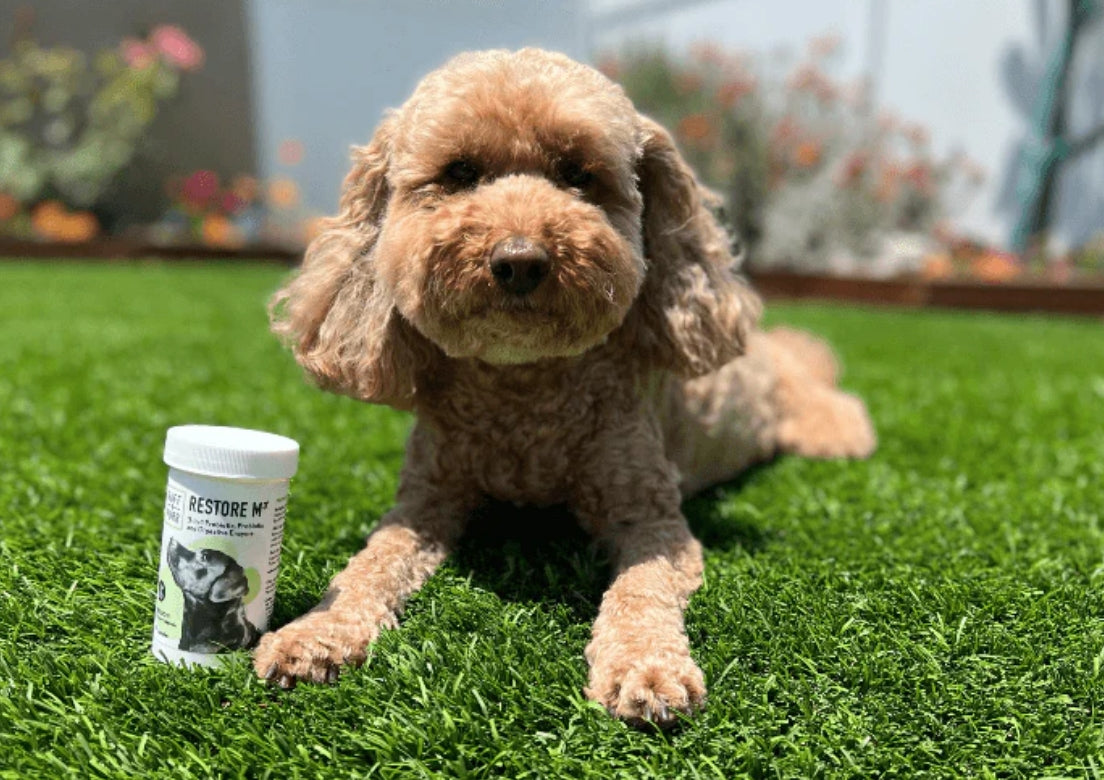The Prebiotic Power of Pumpkin: Boosting Gut Health in Dogs
Pumpkin Pie, Pumpkin lattes, Pumpkin Soup… Americans are big fans of pumpkin and that’s a good thing because it is a very healthy food! Low in calories, high in nutrients and high in fiber… it’s an all-star and something you can include in your diet regularly for many benefits, but did you also know that it’s good for your dog too?

Pumpkin is associated with gut health and probiotics, but pumpkin is actually considered to be more of a prebiotic food. Probiotics are live microorganisms that dwell in the gastrointestinal tract of mammals. Prebiotics are non-digestible carbohydrates which often come in the form of fiber. Prebiotic fibers are not fully digested by us or our dogs and are instead digested by our gut microbiome. An easy way to think about prebiotics and probiotics is to think of them as the fertilizer for the lawn. Prebiotics are the food for Probiotics.
When these non-digestible fibers (carbohydrates) reach the colon, they ferment and produce something called short chain fatty acids, or SCFAs for short. These SFCAs can help provide food for the microbes in your pawed pal’s gut and also serve to protect the gut lining from pathogens (toxins) and foreign invaders (parasites and other harmful bacteria). Over 70% of our dogs immune system is in their gut, and thus it is essential to combine the use of a daily probiotic with both prebiotics and prebiotic foods. Without prebiotics, probiotics may not work as well as their may not be room in your pets digestive tract for additional microbes. The prebiotics help feed the good bacteria in their gut providing the essential health benefits of a healthy gut flora and strong gut lining to keep pathogens out. In addition, prebiotics and prebiotic foods will also help dogs with constantly runny or loose stool.

In essence, these prebiotic fibers restore gut health and work in tandem with probiotics boosting their effectiveness. The combination of both a probiotic and prebiotic is also known as a synbiotic. Synbiotics have been studied in dogs and have been shown in many cases to be extremely beneficial for dog gut health and much more effective than probiotics for dogs alone. Synbiotics have also been shown to help boost gut effectiveness and improve the way that your pup’s endogenous digestive enzymes work to break down their foods to boost nutrient absorption.
What’s the best way to prepare pumpkin for your pawed pal? We recommend to cut it into smaller pieces and to either steam or bake it. Most ovens will work at 350F-400F and cook for 30-45 minutes depending on the size of the pumpkin. If you’re baking it, we also recommend to poke some holes in the skin with a knife or fork in order to prevent blistering of the skin. You can remove the skin after it’s cooked. Make sure to let it cool before serving it to your pup. It should keep in the fridge for 2-3 days and you can also freeze it. Cut it up or puree it - you can experiment to find out how your pup likes it best!
See below for step-by-step instructions.
How to Prepare Pumpkin for Your Pup

Start by selecting a fresh, ripe pumpkin. Organic is best and though it may cost a little bit more, generally has more taste. Make sure to look for pumpkins that are firm and free from any signs of mold or rot.
- Preheat your oven to at least 350°F (175°C).
- Wash the pumpkin thoroughly to remove any dirt or residue from the skin.
- Cut the pumpkin in half and remove the seeds and stringy pulp from the center using a spoon or scoop.
- Cut the pumpkin into smaller, manageable pieces. You can remove the skin or leave it intact, depending on your preference and your dog's chewing ability.
- Place the pumpkin pieces on a baking sheet lined with parchment paper or a silicone mat.
- Bake the pumpkin in the preheated oven for about 45 minutes to an hour, or until the flesh becomes soft and can be easily pierced with a fork.
- Remove the pumpkin from the oven and allow it to cool completely.
- Once cooled, you can scoop out the cooked pumpkin flesh separate from the skin, removing the seeds, and then serve it to your dog.
References:
1.Feed Your Best Friend Better: Easy, Nutritious Meals and Treats for Dogs: Woodford, Rick: 9781449409937



